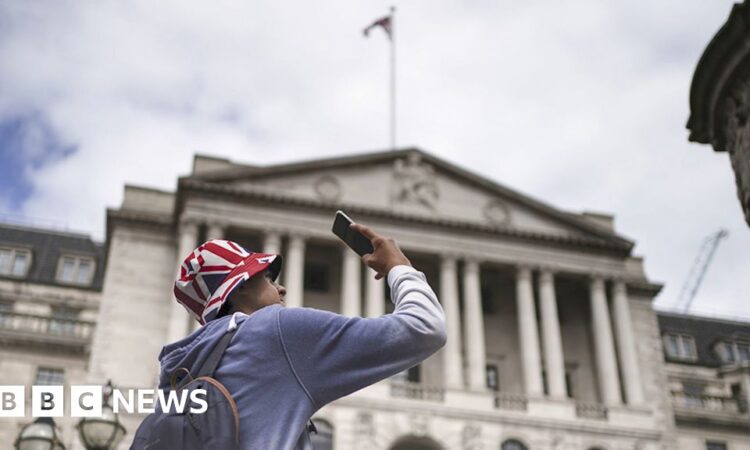
- By Faisal Islam
- Economics editor
At first glance, the sharp fall in the rate of inflation to 6.8% puts the UK on a path to a more normal economic situation.
However the underlying measures of inflationary pressures across the economy, are no longer going in the right direction.
The falls in domestic energy bills have caused the headline rate of inflation to come down for a second month in a row.
But services inflation was back up to 7.4%, the joint highest level since 1992. This means that core inflation, which strips out volatile food and energy, stopped falling, remaining at 6.9%.
This figure shows how much inflation is left in the economy, after the direct impacts of the energy shock has passed through.
Core inflation is the most closely watched measure by the Bank of England. This set of figures increase the likelihood of further rate rises in September and perhaps October too.
The international comparisons show that in the year to July, despite inflation falling everywhere, the UK rate remained higher than comparable economies. Core inflation in Germany, France, across the EU, and in the US, fell in July, while remaining stuck in the UK.
So what we are left with is the mechanical effect of the peak in domestic energy bills when the energy price cap came into effect to limit the amount suppliers could charge per unit.
The next energy price cap change will be announced on 25 August. That will kick in in October and should bring the inflation rate closer to 5%.
Food price inflation has eased but remains very high at 14.8%, so the cost of living crisis remains for millions of households. But the inflationary genie has spread to other parts of the economy, where it does not tend to fall so quickly.
The UK recovery is becoming a tale of three economies. The level of energy prices and the ongoing rises in food prices and rents continue to squeeze the poorest households.
In the middle, homeowner households are being squeezed by rate rises and mortgage costs, but are adjusting their spending.
But at the top end pandemic savings and low rates until last year continue to cushion spending on leisure, travel, and restaurants. It’s why top retailers are increasing their profit forecasts, and airlines and travel companies are reporting bumper custom.
So even as many millions of households still feel squeezed by the cost of living crisis, there are likely to be further interest rate rises. Demand in some parts of the economy remains robust.
The PM yesterday said there is “light at the end of the tunnel”. Today’s figures confirm that we can see that tunnel out of this. It may yet be some time before the light is reached.
What to do if I can’t pay my debts
Interest rate rises mean borrowing on mortgages and credit cards becomes more expensive. Here are some things you can do if you can’t afford your repayments:
- Take control. Citizens Advice suggest you work out how much you owe, who to, which debts are the most urgent and how much you need to pay each month.
- Ask for a payment plan. Energy suppliers, for example, must give you a chance to clear your debt before taking any action to recover the money






